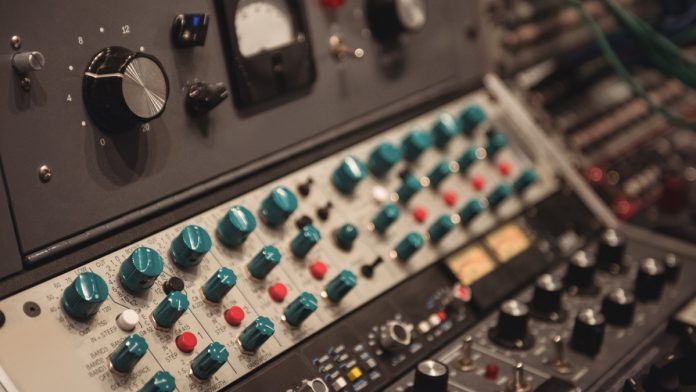The Impact of Film Capacitors on Analog Audio Equipment plays a pivotal role in shaping the sound quality and reliability of vintage and modern audio systems. This article explores how film capacitors influence analog audio equipment by examining their design, performance characteristics, and integration into circuits. With a focus on enhancing signal purity and preserving audio warmth, the following sections delve into technical aspects and historical evolution, providing an informative guide for audio professionals and enthusiasts alike.
| Table of Contents | |
|---|---|
| I. | Fundamental Characteristics of Film Capacitors |
| II. | Historical Context and Evolution |
| III. | Signal Integrity and Audio Purity |
| IV. | Noise Reduction and Interference Management |
| V. | Effects on Frequency Response and Tone Shaping |
| VI. | Thermal Stability and Long-Term Reliability |
| VII. | Microphonic Effects and Mechanical Stability |
| VIII. | Comparative Analysis with Electrolytic and Ceramic Capacitors |
| IX. | Construction Materials and Their Acoustical Impact |
| X. | Circuit Design Considerations |
Fundamental Characteristics of Film Capacitors
Film capacitors are renowned for their low distortion and high precision in analog audio circuits. Their construction typically involves a thin plastic film acting as the dielectric, ensuring excellent stability and reliability. These components offer low equivalent series resistance (ESR) and superior frequency response, making them ideal for critical audio applications. Their predictable behavior under varying conditions distinguishes them from other capacitor types.
Historical Context and Evolution
Film capacitors have evolved alongside analog audio equipment, reflecting technological advancements in materials and design. Early implementations in audio circuits paved the way for enhanced sound performance. Their gradual replacement of less stable capacitors resulted in improved dynamics and clarity. This historical evolution demonstrates the continuous pursuit of better components for achieving refined audio reproduction in professional studios and hi-fi systems.
Signal Integrity and Audio Purity
Integrating high-quality film capacitors directly contributes to signal integrity and audio purity, ensuring smooth performance in analog audio systems. The Impact of Film Capacitors on Analog Audio Equipment is evident as these components minimize harmonic distortion and maintain phase accuracy. Their precision and stability help preserve the true timbre and dynamics of an original recording, which is crucial in both studio and live sound environments.
Noise Reduction and Interference Management
Film capacitors excel at filtering unwanted noise and reducing interference, which is essential for maintaining clean audio signals. Their dielectric properties allow them to effectively separate audio signals from background disturbances. In analog circuits, this capability results in enhanced signal-to-noise ratios, ensuring that the listener experiences a clear, uncolored sound. These capacitors are thus fundamental in reducing ambient and circuit-generated electromagnetic interference.
Effects on Frequency Response and Tone Shaping
Film capacitors influence the frequency response and tone shaping by providing precise and linear performance over a wide range. The Impact of Film Capacitors on Analog Audio Equipment can be observed in their ability to maintain consistent acoustic characteristics, contributing to a balanced tonal output. This property allows designers to tailor audio responses finely, resulting in rich, detailed sound reproduction ideal for both critical listening and musical artistry.
Thermal Stability and Long-Term Reliability
One of the main advantages of film capacitors is their impressive thermal stability. They maintain performance across a wide temperature range without significant drift. This makes them highly reliable in demanding analog audio applications where temperature variations are common. Their robust construction ensures long-term consistency and durability, essential for both studio equipment and high-end consumer audio systems requiring sustained, high-fidelity operation.
Microphonic Effects and Mechanical Stability
Film capacitors are known for their low microphonic tendencies, minimizing the conversion of mechanical vibration into unwanted electrical noise. This mechanical stability is crucial in analog audio circuits where even slight vibrations can impact sound quality. With careful design, these capacitors offer consistent performance under physical stress, ensuring that audio clarity is preserved even in mobile or stage environments where shock and vibration are inevitable.
Comparative Analysis with Electrolytic and Ceramic Capacitors
In comparing capacitor types, film capacitors generally outperform electrolytic and ceramic types in audio circuits. The Impact of Film Capacitors on Analog Audio Equipment becomes apparent when considering factors such as linearity, longevity, and minimal distortion. Unlike electrolytics, they rarely exhibit aging or capacitance loss, and they provide a more transparent sound than many ceramics, making them the preferred choice for high-fidelity audio applications.
Construction Materials and Their Acoustical Impact
The choice of construction materials in film capacitors significantly influences their acoustical performance. High-quality polymer films not only provide excellent dielectric properties but also contribute to a warmer, more natural sound. This material choice minimizes potential resonances and losses, ensuring that the capacitor’s intrinsic properties enhance rather than color the audio signal. Consistent manufacturing leads to predictable performance in precision audio circuits.
Circuit Design Considerations
Careful circuit design is essential when integrating film capacitors into analog audio equipment. Designers must consider factors like voltage ratings, tolerance, and physical layout to maximize performance. The Impact of Film Capacitors on Analog Audio Equipment in this context is underscored by their role in maintaining phase coherence and stability across the signal path. Well-planned implementation ensures that audio equipment delivers clear, detailed, and balanced sound reproduction.

